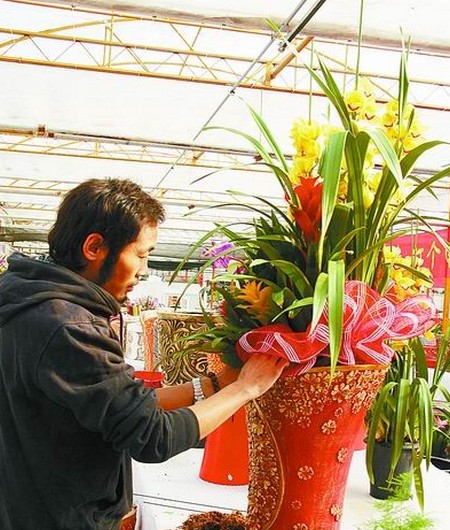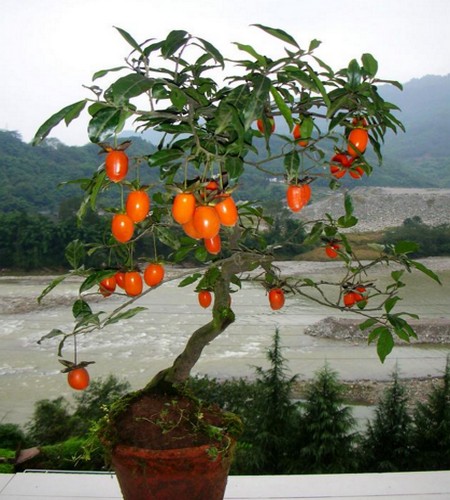Bonsai cultivation techniques of Cymbidium
Cymbidium (also known as Simbilan, hybrid tiger orchid, cicada orchid, new Meiniang orchid) is a general term for epiphytic orchids in the genus Cymbidium of Orchidaceae. There are about 48 species of Cymbidium, and there are nearly 20 native species used as hybrid parents, mainly epiphytes with large flowers and a small number of terrestrial species.
Cymbidium is an artificial hybrid of Cymbidium. Since the first variety of Cymbidium was bred in England in 1889, a large number of interspecific and interspecific hybrids were selected in Europe and America in the 1940s. Up to now, there are 20,000 cultivated varieties of Cymbidium, which is very popular in China's domestic and foreign markets, and has become a large variety group of orchids. The inflorescence of Cymbidium is long, the number of florets is generally more than 10, and the leaf color is greatly affected by the intensity of light, which can range from yellowish green to dark green.

Cymbidium is usually propagated by plant division method, and it is carried out once every 2-3 years. The specific method is to take the sturdy plant out of the basin and cut it off from the junction of the pseudo-corm with a sharp knife and cut it into several clumps, each of which should have 3 pseudocorms (one of which must be newly formed in the previous year). Smear the incision with sulfur powder or charcoal powder in time, put the new plant in a dry place and dry it for 2 days, then put it into the pot separately. The suitable time for ramet is from the fade of flowers to the time of new buds growing. If possible, aseptic sowing, fertilized embryo culture, tissue culture and other methods can be used for mass propagation.
It is appropriate to move the seedlings to the pot before the new buds grow in early spring. Choose a vegetable baking basin with high depth and good permeability. According to the different needs of different varieties, the washed water moss, bark, charcoal block, stone, broken brick, peat and so on were mixed into cultivated soils with different water retention (moisture) properties, and their pH values were between 5.5 and 6.0. When planting, note that the pseudo-corms must all be exposed to the surface of the culture soil. After planting, put it in the half-cloudy and half-sunny place, because the cultivated soil is damp and wet, so avoid watering within 1 week after planting, only spray water on the leaf surface (usually spray 4 times per day for 6 times), and gradually turn to normal maintenance after 1 week.
In daily cultivation, Cymbidium should choose the culture medium with larger particles, such as coconut shavings, pottery burning soil, water moss and so on. Compared with the traditional national orchid, Cymbidium has higher requirements for light.
The lack of light will lead to slender plants and weak disease resistance, but also significantly affect the reproductive growth of Cymbidium; shading 20% in spring, 40% in summer, and 50% in summer, and the light can begin to increase during the flower bud growth period from late September to December. Shading 50% in summer and 60% in autumn, which is conducive to flower bud formation and differentiation. Rainy and snowy days in winter, such as the increase of auxiliary light, is very beneficial to flowering. Watering once in winter 3-5, the basin soil is better to be dry; because the temperature is lower, the lower water content of plant cells will be more conducive to the overwintering of Cymbidium.
From the beginning of spring, the amount of water should be gradually increased, and once a day in early summer until autumn, and then gradually decreased. Cymbidium should be moved into the greenhouse to survive the winter and maintain a temperature of more than 5 ℃ and 8 min. The main reason is that the flower bud differentiation must go through a lower temperature stage at 6 ℃ 10 ℃, while the development and growth of flower buds and buds at 10 ℃ is the most suitable; but at this stage, the temperature difference between day and night should be kept larger, because the temperature difference between day and night is too small, it is easy to cause buds yellowing. Several flowers may grow from each plant, so each plant should be supported from November to make each plant as neat as possible, so as to improve the ornamental value of the whole pot.
Time: 2019-05-25 Click:
- Prev

Cultivation techniques of bonsai in Zhu Dinghong
Zhu Dinghong, also known as Guting flower, its color can cover almost all the other colors in the chromatography except pure blue, pure black and pure green. The flower diameter can reach more than 20 cm, and the flower pattern has the changes of double, single, butterfly and so on. Some varieties have a velvety texture on their petals. In the eyes of the Zhu breeders,
- Next

Cultivation techniques of bonsai with golden marbles hanging fruit
Nature uses a changeable magic pen to paint colorful pictures, let us enjoy it. Nature is the best bonsai master! Every time Hua Mei went to the wild to stroll to a good scenery, she would click and take pictures, hoping to move this natural beauty back home one day. The stone is planted on the tree and placed in the basin.
Related
- Fuxing push coffee new agricultural production and marketing class: lack of small-scale processing plants
- Jujube rice field leisure farm deep ploughing Yilan for five years to create a space for organic food and play
- Nongyu Farm-A trial of organic papaya for brave women with advanced technology
- Four points for attention in the prevention and control of diseases and insect pests of edible fungi
- How to add nutrient solution to Edible Fungi
- Is there any good way to control edible fungus mites?
- Open Inoculation Technology of Edible Fungi
- Is there any clever way to use fertilizer for edible fungus in winter?
- What agents are used to kill the pathogens of edible fungi in the mushroom shed?
- Rapid drying of Edible Fungi

